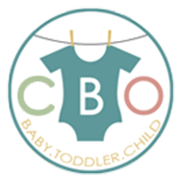No products in the cart.
Sensory play is a great way to get your child or toddler engaged in an activity that really stimulates their senses; touch, smell, taste, sight, and hearing. Sensory play lets your toddler explore and gives your little one the chance to discover science while they play. When you give a kid the chance to explore through play, with no previous expectations or desires, they are able to develop or refine their cognitive, social, emotional and linguistic skills.
Research shows that sensory play builds the nerve connections in the brain’s pathways which means your child is able to learn how to do more complicated things. Something as simple as playing with containers of sand helps to develop math skills such as size, or sifting sand through a strainer helps build an understanding of time. As kids play with toys in a sensory tub or on a sensory table, their brain is hard at work classifying, sorting and absorbing all the concepts around them.
Another great example would be seeing cause and effect when children explore filling and emptying materials and learning what sinks, what floats, and what happens when the container is already full.
All of these moments of exploration really build problem-solving skills that can often be applied in day to day life and can play a part in enhancing memory.
When it comes to language development, children can really develop pre-writing skills through sensory play. They are also given an environment to be and express themselves as they play. It can be very frustrating for children who want to express themselves but don’t know how, but sensory play can help build language associations or give you an opportunity to explain what things mean. For example, if you want to describe sand as “gritty”, you’re able to demonstrate this, not just explain it as a concept.
Sensory play is also a way to develop both fine motor and gross motor skills. Down the line, fine motor skills will help your child learn how to tie their shoes or close zippers whereas gross motors skills that involve the larger muscles of the body, include walking or throwing a ball.
When your child has the chance to be exposed to sensory play, they really are exposed to an immersive playing environment that feeds all of their senses and the good news is that sensory play doesn’t have to be very expensive at all. Here are some examples of sensory play activities you can make at home. Warning… some are a little messier than others!
- Add a touch of food coloring to bath water and watch how it flows.
- Tie Die some t-shirts and see what happens when you combine colors.
- Make your own rainbow rice for a sensory bin (here’s a great recipe from Happy Hooligans)
- Spaghetti Painting (this will get messy). This is a great idea over at Kid’s Playbox.
- Build a bubble foam tub of fun. Here are easy to follow instructions from Busy Toddler.
- Make your own sensory bags.
- Create a masterpiece with shaving foam marbling.
- Build your own pirate treasure sensory bin.
Which of these activities has your child enjoyed the most? Share your favorite in the comments below.
